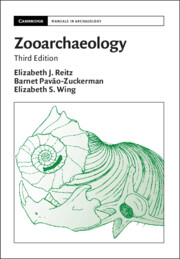Refine search
Actions for selected content:
956 results
5 - The Factory Regime
- from Part II - Modernizing Coercion
-
- Book:
- Ottoman Reform at Work
- Published online:
- 19 December 2025
- Print publication:
- 29 January 2026, pp 162-200
-
- Chapter
- Export citation
1 - Accumulating Capital
- from Part I - A New Order
-
- Book:
- Ottoman Reform at Work
- Published online:
- 19 December 2025
- Print publication:
- 29 January 2026, pp 29-60
-
- Chapter
- Export citation
7 - Will there be Solidarity in Data-Driven Societies?
-
-
- Book:
- The Question of Solidarity in Law and Politics
- Published online:
- 22 December 2025
- Print publication:
- 29 January 2026, pp 139-158
-
- Chapter
-
- You have access
- Open access
- HTML
- Export citation
21 - From Internetica to Mediatization: Literary Practices and Their Meanings in the Digital Age
- from Part III - Hebrew In The ‘Post’ Era
-
-
- Book:
- A History of Modern Hebrew Literature
- Published online:
- 19 December 2025
- Print publication:
- 22 January 2026, pp 431-451
-
- Chapter
- Export citation
Chapter 4 - Governing the Fens
- from Part I - Scales of Action
-
- Book:
- Violent Waters
- Published online:
- 17 December 2025
- Print publication:
- 08 January 2026, pp 90-120
-
- Chapter
- Export citation

Zooarchaeology
- Coming soon
-
- Expected online publication date:
- January 2026
- Print publication:
- 18 December 2025
-
- Textbook
- Export citation

Making Medical Progress
- History of a Contested Idea
-
- Published online:
- 12 December 2025
- Print publication:
- 20 November 2025
-
- Book
-
- You have access
- Open access
- Export citation
Chapter 4 - Rumstick Road in Rehearsal
-
- Book:
- American Performance in 1976
- Published online:
- 27 November 2025
- Print publication:
- 11 December 2025, pp 215-268
-
- Chapter
- Export citation
Chapter 1 - Theatre as Technology
-
- Book:
- Theatre as Technology
- Published online:
- 27 November 2025
- Print publication:
- 11 December 2025, pp 1-35
-
- Chapter
- Export citation
Chapter 4 - Digital play
-
- Book:
- Play in the Early Years
- Published online:
- 12 December 2025
- Print publication:
- 11 December 2025, pp 59-87
-
- Chapter
- Export citation
Investigating Technology Change without Typology: The Spread of the Bow and Arrow in California
-
- Journal:
- American Antiquity , First View
- Published online by Cambridge University Press:
- 02 December 2025, pp. 1-18
-
- Article
-
- You have access
- Open access
- HTML
- Export citation

Theatre as Technology
- Apparatus, Nostalgia, Obsolescence
-
- Published online:
- 27 November 2025
- Print publication:
- 11 December 2025
Linking traditional and technological activities of daily living: Building modern, adaptable measures of daily functioning
-
- Journal:
- Journal of the International Neuropsychological Society / Volume 31 / Issue 9-10 / November 2025
- Published online by Cambridge University Press:
- 25 November 2025, pp. 721-730
-
- Article
- Export citation

Chilling Effects
- Repression, Conformity, and Power in the Digital Age
-
- Published online:
- 20 November 2025
- Print publication:
- 20 November 2025
Cultures of Power: Electrification, Politics, and Visibility in Greater Los Angeles
-
- Journal:
- Enterprise & Society , First View
- Published online by Cambridge University Press:
- 19 November 2025, pp. 1-11
-
- Article
-
- You have access
- Open access
- HTML
- Export citation
1 - Law’s Imperfect Governance
- from Part I - Discontent with Law’s Governance
-
-
- Book:
- The Cambridge Handbook of the Governance of Technology
- Published online:
- 30 October 2025
- Print publication:
- 13 November 2025, pp 3-21
-
- Chapter
- Export citation
8 - Technology and National Security
-
-
- Book:
- Explaining the History of American Foreign Relations
- Published online:
- 24 October 2025
- Print publication:
- 13 November 2025, pp 161-182
-
- Chapter
- Export citation
We Don’t Need More Screens in Museums
- Part of
-
- Journal:
- Public Humanities / Volume 1 / 2025
- Published online by Cambridge University Press:
- 12 November 2025, e158
-
- Article
-
- You have access
- Open access
- HTML
- Export citation

Being Human in the Digital World
- Interdisciplinary Perspectives
-
- Published online:
- 11 November 2025
- Print publication:
- 20 November 2025
-
- Book
-
- You have access
- Open access
- Export citation
Approaching Connectivity and Community Through Rural Crafts in Early Roman Cambridgeshire: The Case of the Lower Ouse Valley Potteries
-
- Journal:
- Britannia , First View
- Published online by Cambridge University Press:
- 07 November 2025, pp. 1-35
-
- Article
- Export citation
